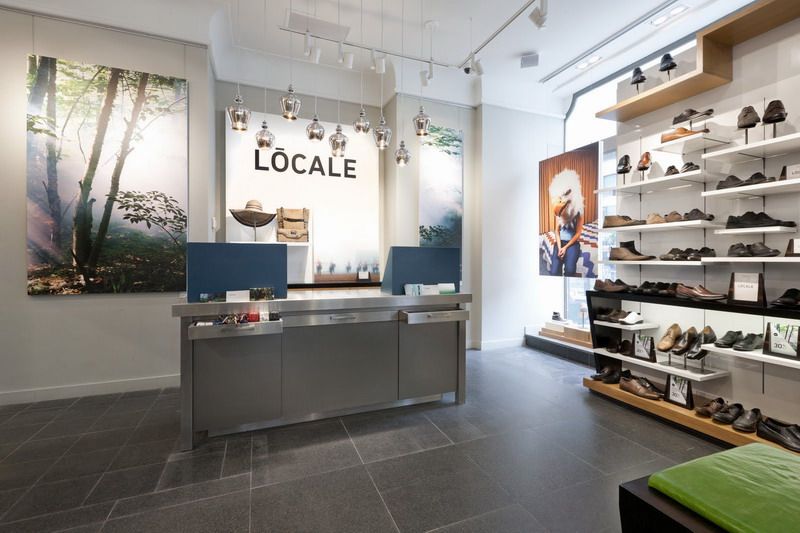
Merchandising for your client

The inevitable increase in prices associated with an increase in the exchange rate leads to a change in consumer. The exact match of the assortment and the appearance of the store to the new customer is the key to successful sales. With the help of what simple tools you can quickly compose a portrait of your client and how reorganization of the store format will help you retain the consumer - the merchandising specialist Marina Polkovnikova knows.
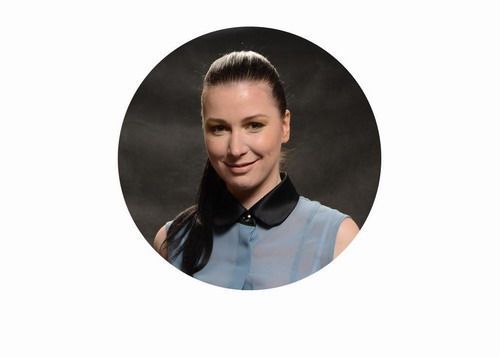
Marina Polkovnikova - Founder of VM-Consulting agency, merchandising and store design consultant with 12 years of experience. Lecturer at the Art & image Institute, speaker of business programs at Mosshoes, EuroShoes exhibitions, conferences to increase retail sales.
VM Consulting Is a visual merchandising agency for fashion stores. Provides a wide range of services from setting up a merchandising system, store audits to store design and staff training. The agency's clients are such brands as Tom Farr, HC, Giorgio Grati, ToBeQueen, RendezVour, Mascotte, Meucci, the Golden Taurus jewelry store chain, etc. \
Before the crisis began, buyers changed their preferences, the customer was rotated both within the same price category and between them. Thus, the correction of the client’s portrait is not an anti-crisis event, but an annual necessity. The retailer should monitor market changes regardless of economic shocks, as changing the customer preferences is not only influenced by price. But, of course, right now this question is especially acute.
Most analysts tend to believe that buyers will buy no less, but will shift in price. If in a favorite store the price tag jumped from 2800 rubles to 4500 rubles, it is easy to assume that the buyer will go to the retailer, where the price tag from 1500 rubles increased to 2800 - 3000 rubles, but the quality of the goods is as usual.
At different poles
All customers can be divided into 2 types - time keeper and fan shopper.
time keepers they don’t like shops for their hustle, bustle and loss of time valuable to them .. As a rule, they go to the mall a month or even a season to immediately replenish the wardrobe with everything they need, that is, preferring it with such an unpleasant thing for them "Procedure", like shopping, will cope at a time. If they have sufficient financial resources, they often resort to the services of stylists, buyers, which free them from having to spend time looking for a suitable wardrobe. Moreover, when working with “keepers”, buyers always visit stores in advance, looking for suitable models in order to offer ready-made options to the client. If the “keeper” is forced to pick up clothes on his own, he will usually prefer a store in which there are many ready-made solutions - bows are presented on mannequins or through merchandising: goods that complement each other are placed next to each other.
Character traits. It is not difficult to find out the “keeper” from the buyer: these are, as a rule, serious people who are restrained by the manifestation of emotions. They are democratically dressed. In their wardrobe there will be no bright spots and unexpected combinations of colors and textures. Fashion trends in their wardrobe can be traced, but everything is very, very reserved. The coat is classic, the suit is universal. Clear, tasteful, stylish. Such buyers rarely heed the opinion of the seller and are not ready for open communication. They are somewhat arrogant and believe that a person who has achieved nothing but to work at the box office is unlikely to be able to advise them anything. The exception is sellers with whom they have already established contact, who have proven their competence and have established themselves as professionals. Kipers are rarely seen in stores on weekends when there is a large influx of customers.
Merchandising techniques. Weighing and layout should be specific and understandable. Such customers will prefer a multi-brand clothing and shoe store, where the assortment is presented more fully and it is easy to assemble a full-fledged image. Shop windows designed for this category of customers should also be clear, the client should easily “count” the assortment of the store before it even enters it. There is no “water” and extra decorations in the interior; the rule works here: the simpler the better. An important role in retaining such a customer is played by the store staff. It is necessary to record all purchases of the “keeper” in order to lure him with a personalized approach. Time keepers will surely appreciate such attention to their person and will stay with you. “Olga, the last time you bought a bag from us, we have a new collection and in which there is a model that fits your bag perfectly. We set it aside for you. We are sure that it will suit you. ” You do not just inform the keeper about the arrival of a new collection, but inform him about specific models that complement his everyday wardrobe. The client will return to you more than once.
fan shoppers - fans of shopping. They get incredible pleasure from hanging out in the shopping center. In search of the necessary gizmos, they can come to the same store several times a week - “what if”! They spend a lot of time trying on, but they can leave the store with nothing. And that will not upset them at all. They require a lot of attention to themselves, distracting sellers from other customers who are more likely to make a purchase. But this does not mean that from "shoppers" it is necessary to brush off, as from annoying flies! They are so emotional, open, sociable that they help the retail point to create a pool of loyal customers: they willingly give advice to other customers, provoking them to buy. They are aware of trends, trends, fashionable combinations of colors and textures, so they are willing to listen to their opinion. They are often trusted more than sellers, since they are not interested in the success of the store’s sales and I advise them sincerely, focusing only on their own experience in fashion.
Specific traits. A striking representative of this group of buyers is the main character of the movie “Shopaholic”. Bright, emotional, ready to spend the last for the sake of the little thing you like (and here financial wealth does not matter). "Shoppers" are susceptible to impulse purchases. They love accessories and in the store the first thing they do is go to the accessory group.
Merchandising techniques. For this category of buyers, the shop windows and the interior of the store should be emotionally vibrant and attractive. "Shoppers" like to create fashionable images themselves, but interesting bows in the windows will surely attract their attention. If the vast majority of your customers are shoppers, work for them. Create bright bows, lay out the most trendy models on priority places and shelves.
Rogers diffuse model
The concept of diffusion of innovations is based on the theoretical developments of the French legal scholar Gabriel Thardt, who lived in the 1962th century. This theory was popularized by the American sociologist Everett Rogers in XNUMX, thanks to his published book, "Diffusion of Innovation." Rogers defines “diffusion” as the process by which innovation (for example, new ideas, processes or products) is transmitted over time through certain channels among members of social systems. To identify the different types of consumer behavior, Rogers developed a classification method using the so-called innovation propensity distribution curve. The adaptation process is defined in terms of the individual behavior of people and taking into account how their behavior reflects the speed with which they are ready to try something new.
Depending on the types of such behavior, Rogers identified 5 groups of people:
- innovators
- early followers
- earlier most
- later most
- lagging
Draw a graph (see diagram)
1. Innovators - 2,5%
2. Early followers - 13,5%
3. Previously, the majority - 34%
4. Late majority - 34%
5. Lagging - 16%
Innovators - risky and educated, active in finding sources of information, able to understand and apply complex knowledge, not afraid of failures. As soon as a new trend appears, innovators “try on” it immediately. As soon as this trend becomes widespread, innovators reject it and switch to searching for a new, unusual, unique image. These people are out of fashion, as they themselves create fashion. These are designers who do not track, but feel that it will be fashionable. Vivienne Westwood, Yohji Yamamoto, Alexander Wong are innovative designers whose collections await the entire fashion world. Bright representative of the group: the editor of Italian Voque Anna Dello Russo - she does not create fashion, but broadcasts it. Innovators are not afraid to experiment, look stupid or funny and be outside of society.
Early followers - venerable social leaders, well-known, educated, strive to use new technologies to introduce a novelty into society, are risky, insensitive to price. These are mostly people with good incomes, which allows them to choose only the best and the most fashionable. In recent years, fashion bloggers have joined this group. Thanks to their passion for fashion, they attend all shows and do not miss a single social event, they are aware of all the trends and subtly feel that they will be commercially successful. Their ability to isolate the hottest trends from the general mass finds its fans. This is the category of people who need to be in fashion: movie stars, media people, designers. They are opinion leaders, they evaluate what is relevant and what is not. Each subculture, its age group, social circle has its own leader, its early follower, which is an icon of style. His choice is significant for many fashion lovers.
Early majority - are discreet and have many informal contacts. Their motto is: “Do not be the first in something new!”, “When it is time to move, let's move all together!” This very clearly reflects their attitude to fashion. They are not against fashion trends, but let others “test” them for themselves and if the fashion idea passes field tests, representatives of the early majority are ready to wear it. So, for example, innovators started wearing pointed shoes a year ago, while the early majority picked up the trend only six months later. Representatives of this large group do not deny fashion. They love trends, but not all of them are ready to try on themselves. They choose stores where fast-fashion is certainly present, but there are also basic models. Typical retailers working for this consumer are Bershka and Zara, Podium market.
Later most - are skeptical, traditional, prudent, accept innovations under the pressure of the majority. They “read” trends from acquaintances, from passers-by on the street. Only after they are convinced that a particular trend is not a short-term phenomenon, but off-season, they are ready to buy it. They are rational and prefer basic things. Retailers such as Massimo Dutti, Gant, Stockmann are oriented towards such a consumer. In these stores, of course, the main trends of the season are presented - in color, texture, fabrics - but they are more restrained.
Lagging behind - traditional, very suspicious of innovation, are not leaders, have narrow-minded views, are very sensitive to price. There are two categories of buyers: those who have money, but they are completely indifferent to fashion. Once a randomly selected brand becomes the only one possible for them. The second category is low-income people who simply do not have the ability to dress fashionably. They prefer to shop at sales and at discounts.
Observation post
Your task, using one of these two gradations of consumer behavior, is to create a clear portrait of your client. It is easier than it sounds. In appearance, style, chosen image it is easy to understand who is in front of you - “shopper”, “keeper”, early or late follower. Who most often comes to your store, and most importantly - who most often buys.
Nowadays, most retailers have neither time nor money to resort to lengthy research on consumer behavior. Visual assessment is that simple and understandable way that always works. Two or three days of work of a manager, marketer or merchandiser of the company will make it possible to draw up a portrait of the consumer and make the necessary adjustments to the assortment policy and merchandising.
Make a small questionnaire for your “researcher”, in which he will record information about customers: age, appearance, what he is wearing, approximate social status and average monthly income. It is better to study the consumer on weekdays in the evening hours (during the day there are a lot of random people in the store), 30 - 40 descriptions will help to reveal the general behavioral characteristics characteristic of your customer.
If the store sells to the buyer from the late majority, it will be erroneous to create bows and prioritize goods designed for the early majority. Of course, a talented merchandiser can change the look of the store and interest buyers of another group, but having studied the entire assortment of the store, they are unlikely to make a purchase. If you are focused on the late majority, you should not show the wonders of merchandising to attract consumers to the store - this will not increase conversion.
In a crisis, retail faces a difficult task: to retain an old customer and attract a new one. It is necessary to track the situation with the client, analyze the portrait of the customer in 2015 and change the assortment (add a more affordable category of goods, increase the price gradually and not for all groups of goods) or use the merchandising tools to create the most comfortable conditions for a new consumer.
Merchandising without errors
The Russian market of clothing, footwear and accessories is divided into 4 price segments, each of which has characteristic features both in terms of development dynamics and in relation to the organization of companies and consumer behavior.
- Upper price segment (Premium + Luxury, hot couture and prêt-a-porte);
- High and medium bridge (diffuse brands - the second line of designer brands and transition brands - with pricing between prêt-a-porte and the mass market);
- Mass market (low bridge and moderate);
- Low price segment Budget.
The display of goods very clearly indicates that the store belongs to a particular retail segment. The higher the price segment - the lower the density of the weighting and placement of the goods.
In a crisis, everyone is counting on the turnover of goods, since exchange rates reduce margins, but this does not mean that you should neglect the calculation rules. No wonder merchandising is called the "silent seller." Systematization of goods allows the buyer to easily find the right product and not leave without a purchase. Here the rule works: chaos in the product - chaos in sales!
- Do not strive to present the entire product range. Presenting the model in the hall only in a couple of sizes, you demonstrate a certain exclusivity of the product. Do not use the calculation along the entire height of wall racks, do not force passages. Due to the distances between the island equipment, the value value of the goods increases. So the client less often asks the question: “Why is it so expensive!” Do not use (only if you are not a mass market) a two-level suspension: on the upper racks (above 1,6 m) place only accessories, mannequins, posters, POS materials. Alternate the presentation of capsule collections.
- Refuse to purchase models similar in design, with minor differences in finish. In the end, the client will not be able to decide what he likes black stiletto ankle boots and black stiletto heel shoes with a small bow! The choice is ruining the buyer.
- If we have a great depth in color, do not lay out all the colors on the trading floor. If the customer is interested in the goods, inform him of the availability of other colors. Do not litter the store, do not reduce the cost of its appearance.
- Let there be more mirrors in your store: if you are saving on staff, give the customer the opportunity to evaluate the goods when trying on without assistance.
| Please rate the article |
Materials on the topic
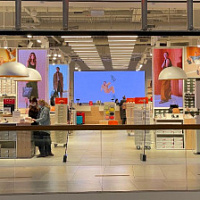
Should a shoe store spend money on digital screens?
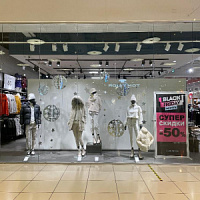
Mistakes in the lighting of the sales area that spoil the impression of a shoe store
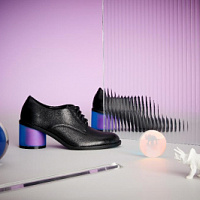
Technical aspects of display space and current trends in its design
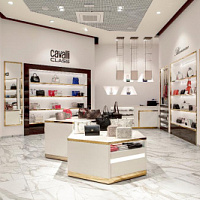
Design rules for a shoe and accessories store
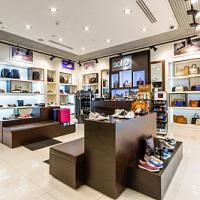
Pandemic-influenced visual merchandising transformation for shoe and accessories store
Popular
 Coach turned to Big Data analysis and won the interest of a young audience
American handbag brand Coach has planned the success of its Tabby model among a younger audience, Generation Z, by turning to big data analysis, abandoning traditional and analogue tools, such as human intuition or the ability of any executive to sense “which way the wind will blow,” writes B.O.F.
Coach turned to Big Data analysis and won the interest of a young audience
American handbag brand Coach has planned the success of its Tabby model among a younger audience, Generation Z, by turning to big data analysis, abandoning traditional and analogue tools, such as human intuition or the ability of any executive to sense “which way the wind will blow,” writes B.O.F.
 IDOL updates the concept
The IDOL brand, part of the Melon Fashion Group portfolio, opened the first flagship in an updated concept in the Aviapark shopping center in Moscow.
IDOL updates the concept
The IDOL brand, part of the Melon Fashion Group portfolio, opened the first flagship in an updated concept in the Aviapark shopping center in Moscow.
 Seven “sins” of the shoe business. How do owners harm the company with their own hands?
Why is Company X able to create a strong, profitable brand, but Company Y is struggling to make ends meet? Many people prefer to attribute success to luck, luck, or the support of strong patrons. And few people ask themselves the question: “What am I doing wrong?” Moreover, many entrepreneurs begin to harm their business from the first day of its opening. In this article, together with SR expert in the field of fashion business management and development, Maria Gerasimenko, we will look at the 7 main “sins” that business owners commit using specific examples.
Seven “sins” of the shoe business. How do owners harm the company with their own hands?
Why is Company X able to create a strong, profitable brand, but Company Y is struggling to make ends meet? Many people prefer to attribute success to luck, luck, or the support of strong patrons. And few people ask themselves the question: “What am I doing wrong?” Moreover, many entrepreneurs begin to harm their business from the first day of its opening. In this article, together with SR expert in the field of fashion business management and development, Maria Gerasimenko, we will look at the 7 main “sins” that business owners commit using specific examples.
 Louis Vuitton opens a new factory in Italy
Louis Vuitton has opened its second shoe factory in Italy. After opening the first one in Fiesso d'Artico in Veneto, the LVMH flagship brand has just opened a new production site dedicated to this category of footwear in the industrial zone of Civitano in the Marche region. There is also another brand production facility in Tuscany, where bags and leather accessories are produced, writes fr.fashionnetwork.com.
Louis Vuitton opens a new factory in Italy
Louis Vuitton has opened its second shoe factory in Italy. After opening the first one in Fiesso d'Artico in Veneto, the LVMH flagship brand has just opened a new production site dedicated to this category of footwear in the industrial zone of Civitano in the Marche region. There is also another brand production facility in Tuscany, where bags and leather accessories are produced, writes fr.fashionnetwork.com.
 The Euro Shoes@CAF exhibition will be held in Almaty
From March 11 to 13, the Euro Shoes@CAF (Central Asia Fashion) exhibition will be held in Almaty at the Atakent exhibition complex. The exhibition, which is the largest international event in the fashion industry in Central Asia, will present collections of clothing, shoes and accessories.
The Euro Shoes@CAF exhibition will be held in Almaty
From March 11 to 13, the Euro Shoes@CAF (Central Asia Fashion) exhibition will be held in Almaty at the Atakent exhibition complex. The exhibition, which is the largest international event in the fashion industry in Central Asia, will present collections of clothing, shoes and accessories.
 Euro Shoes will start operating on February 19 in Moscow!
The winter session of the international exhibition of footwear and accessories Euro Shoes premiere collection will be held in Moscow at the Expocenter from February 19 to 22. The organizers promise the presence of all the main participants at the exhibition, as well as new names from Europe, Asia and Russia.
Euro Shoes will start operating on February 19 in Moscow!
The winter session of the international exhibition of footwear and accessories Euro Shoes premiere collection will be held in Moscow at the Expocenter from February 19 to 22. The organizers promise the presence of all the main participants at the exhibition, as well as new names from Europe, Asia and Russia.
 American buyers couldn't buy Birkin bags and sued Hermès
French fashion house Hermès is facing a lawsuit in California from two customers who were unable to purchase exclusive Birkin bags. The fashion house is accused of unfair commercial practices.
American buyers couldn't buy Birkin bags and sued Hermès
French fashion house Hermès is facing a lawsuit in California from two customers who were unable to purchase exclusive Birkin bags. The fashion house is accused of unfair commercial practices.
 Why Rendez-Vous and Yandex Lavka released a “bread bag”
Shoe retailer Rendez-Vous announced the launch of a spring collaboration with Yandex Lavka and released a roll that resembles the shape of a woman’s handbag. This “Bread Bag” is presented in the Yandex.Lavka application at a price of 249 rubles. On the product packaging there is a promotional code for 1000 rubles, which can be spent in the Rendez-Vous network.
Why Rendez-Vous and Yandex Lavka released a “bread bag”
Shoe retailer Rendez-Vous announced the launch of a spring collaboration with Yandex Lavka and released a roll that resembles the shape of a woman’s handbag. This “Bread Bag” is presented in the Yandex.Lavka application at a price of 249 rubles. On the product packaging there is a promotional code for 1000 rubles, which can be spent in the Rendez-Vous network.
 Camper has released innovative sneakers - designers
Spanish brand Camper's new Roku sneaker features six interchangeable components to create up to 64 different looks and color combinations. Roku means "six" in Japanese.
Camper has released innovative sneakers - designers
Spanish brand Camper's new Roku sneaker features six interchangeable components to create up to 64 different looks and color combinations. Roku means "six" in Japanese.
 Christian Louboutin presented a collection in a cowboy style
At the Loubi Show in Paris, the French luxury brand Christian Louboutin presented its fall 2024 collection, following the trend - in the style of the Wild West. It included cowboy boots and rhinestone loafers.
Christian Louboutin presented a collection in a cowboy style
At the Loubi Show in Paris, the French luxury brand Christian Louboutin presented its fall 2024 collection, following the trend - in the style of the Wild West. It included cowboy boots and rhinestone loafers.
 Fashion Week takes place in Moscow
Fashion Week takes place in the Russian capital. Events include fashion shows, markets where you can purchase clothes, bags and accessories, and a B2B Showroom for fashion industry professionals.
Fashion Week takes place in Moscow
Fashion Week takes place in the Russian capital. Events include fashion shows, markets where you can purchase clothes, bags and accessories, and a B2B Showroom for fashion industry professionals.
 Turkish brand Vaneda on Euro Shoes
Street style, sport, outdoor, military – the main style directions of footwear of the company from Turkey
Turkish brand Vaneda on Euro Shoes
Street style, sport, outdoor, military – the main style directions of footwear of the company from Turkey
 Kari accuses Zenden of unfair competition and is suing the FAS
The largest Russian shoe chain, Kari, appealed to the Moscow Arbitration Court to declare the actions of the Federal Antimonopoly Service (FAS) illegal, writes RBC.
Kari accuses Zenden of unfair competition and is suing the FAS
The largest Russian shoe chain, Kari, appealed to the Moscow Arbitration Court to declare the actions of the Federal Antimonopoly Service (FAS) illegal, writes RBC.
 Fashion trends Fall-Winter 2023/24 for commercial footwear purchases
Permanent contributor to Shoes Report. Elena Vinogradova, an expert in sales and purchases in the fashion business, prepared an overview of the trends for the autumn-winter 2023/24 season especially for us.
Fashion trends Fall-Winter 2023/24 for commercial footwear purchases
Permanent contributor to Shoes Report. Elena Vinogradova, an expert in sales and purchases in the fashion business, prepared an overview of the trends for the autumn-winter 2023/24 season especially for us.
 MSCHF and Crocs launch "Big Yellow Boots"
Creator of the Big Red Boots, Brooklyn brand MSCHF has teamed up with American plastic clog and sandal brand Crocs for another oversized shoe. The new Big Yellow Boots will go on sale on August 9th.
MSCHF and Crocs launch "Big Yellow Boots"
Creator of the Big Red Boots, Brooklyn brand MSCHF has teamed up with American plastic clog and sandal brand Crocs for another oversized shoe. The new Big Yellow Boots will go on sale on August 9th.
 Five rules of professional lighting for a shoe store - something that is relevant in any season
When developing a lighting concept for shoe retailers, it is important to take into account not only the history of the brand, the architectural content of the premises, the target audience of the stores, but also the seasonality of the goods. With the onset of the cold season, client preferences change: bright weightless shoes are replaced by more massive models in discreet dark colors. Despite significant differences in summer and winter collections, the overall philosophy of the brand, its recognition should remain unchanged at any time of the year. Tatyana Ryzhova, an SR lighting expert in fashion retail, has identified five basic rules for a competent lighting concept for a shoe store for readers of the magazine, which will help to present winter assortment to customers in a winning way.
Five rules of professional lighting for a shoe store - something that is relevant in any season
When developing a lighting concept for shoe retailers, it is important to take into account not only the history of the brand, the architectural content of the premises, the target audience of the stores, but also the seasonality of the goods. With the onset of the cold season, client preferences change: bright weightless shoes are replaced by more massive models in discreet dark colors. Despite significant differences in summer and winter collections, the overall philosophy of the brand, its recognition should remain unchanged at any time of the year. Tatyana Ryzhova, an SR lighting expert in fashion retail, has identified five basic rules for a competent lighting concept for a shoe store for readers of the magazine, which will help to present winter assortment to customers in a winning way.
 I doubt and object: how to find an approach to difficult clients?
How good and serene would be the work of a salesperson if the customers were calm, cheerful, always knew exactly what they wanted, and bought, bought, bought! It is a pity that this is possible only in dreams. Therefore, we will not dream, but we will act. Together with Maria Gerasimenko, a permanent author of SR, we understand the doubts and objections of buyers and build a strategy for working with them. Our expert pays special attention to the two main objections of buyers, on which 82% of sales are lost.
I doubt and object: how to find an approach to difficult clients?
How good and serene would be the work of a salesperson if the customers were calm, cheerful, always knew exactly what they wanted, and bought, bought, bought! It is a pity that this is possible only in dreams. Therefore, we will not dream, but we will act. Together with Maria Gerasimenko, a permanent author of SR, we understand the doubts and objections of buyers and build a strategy for working with them. Our expert pays special attention to the two main objections of buyers, on which 82% of sales are lost.
 EURO SHOES presents an updated section of the GLOBAL SHOES exhibition with collections of shoe and bag brands from Asian countries
EURO SHOES premiere collection is expanding. Along with the traditional pool of leading European footwear brands from Germany, Spain, Italy and Turkey, several dozen footwear and bag brands from the Middle Kingdom will be presented in the GLOBAL SHOES section at the Moscow Expocentre from August 29 to September 1.
EURO SHOES presents an updated section of the GLOBAL SHOES exhibition with collections of shoe and bag brands from Asian countries
EURO SHOES premiere collection is expanding. Along with the traditional pool of leading European footwear brands from Germany, Spain, Italy and Turkey, several dozen footwear and bag brands from the Middle Kingdom will be presented in the GLOBAL SHOES section at the Moscow Expocentre from August 29 to September 1.
 World Footwear Yearbook: Global footwear production reaches 23,9 billion pairs and is back to pre-pandemic levels
The Portuguese association of shoe manufacturers APICCAPS published the 13th edition of the international statistical bulletin World Footwear Yearbook for 2023, according to which in 2022 the production and export of shoes worldwide increased by 7,6% and 9%, respectively, and the world production of shoes reached 23,9 billion couples and returned to pre-pandemic levels.
World Footwear Yearbook: Global footwear production reaches 23,9 billion pairs and is back to pre-pandemic levels
The Portuguese association of shoe manufacturers APICCAPS published the 13th edition of the international statistical bulletin World Footwear Yearbook for 2023, according to which in 2022 the production and export of shoes worldwide increased by 7,6% and 9%, respectively, and the world production of shoes reached 23,9 billion couples and returned to pre-pandemic levels.
 Rostov footwear brand Novak presented a collection of sneakers and sneakers
In the spring-summer 2023 season, the Rostov-on-Don shoe brand Novak presented a cute collection of sneakers and sneakers for every day. The upper of the shoe is made of genuine leather, suede, nubuck, the sole is made of light EVA.
Rostov footwear brand Novak presented a collection of sneakers and sneakers
In the spring-summer 2023 season, the Rostov-on-Don shoe brand Novak presented a cute collection of sneakers and sneakers for every day. The upper of the shoe is made of genuine leather, suede, nubuck, the sole is made of light EVA.
 Jacquemus x Nike collaboration released
The second collaboration between Jacquemus and Nike, which has been talked about so much, is finally out. The appearance of the couple for many was a surprise. The model of Nike Air Force 1 sneakers, which was taken as the basis of the new collection, has undergone significant changes.
Jacquemus x Nike collaboration released
The second collaboration between Jacquemus and Nike, which has been talked about so much, is finally out. The appearance of the couple for many was a surprise. The model of Nike Air Force 1 sneakers, which was taken as the basis of the new collection, has undergone significant changes.
 Crocs releases a collaboration with Barbie
If Barbie ditched heels and wore crocs, they would be pink. It was this collection in pink that was released by the American brand of plastic clogs Crocs, for the release of the film "Barbie" in the United States.
Crocs releases a collaboration with Barbie
If Barbie ditched heels and wore crocs, they would be pink. It was this collection in pink that was released by the American brand of plastic clogs Crocs, for the release of the film "Barbie" in the United States.
 Japanese BAPE takes to the catwalk MSCHF Big Red Boots
The story of Brooklyn brand MSCHF's oversized rubber boots continues. The last time they made noise in the auditorium was at the Rick Owens menswear show. Now they have already appeared on the podium.
Japanese BAPE takes to the catwalk MSCHF Big Red Boots
The story of Brooklyn brand MSCHF's oversized rubber boots continues. The last time they made noise in the auditorium was at the Rick Owens menswear show. Now they have already appeared on the podium.
 Shoe educational program: what shoe soles are made of
“What is the difference between TEP and EVA? What does tunit promise me? Is PVC glue? What is the sole of these shoes made of? ”- the modern buyer wants to know everything. In order not to smash his face in front of him and be able to explain whether such a sole suits him in soles, carefully read this article. In it, process engineer Igor Okorokov tells what materials the soles of shoes are made of and what makes each of them so good.
Shoe educational program: what shoe soles are made of
“What is the difference between TEP and EVA? What does tunit promise me? Is PVC glue? What is the sole of these shoes made of? ”- the modern buyer wants to know everything. In order not to smash his face in front of him and be able to explain whether such a sole suits him in soles, carefully read this article. In it, process engineer Igor Okorokov tells what materials the soles of shoes are made of and what makes each of them so good.
 How to set prices that will earn
Some businessmen still confuse the concept of margin with the concept of trade margins and set prices for their goods, guided solely by the example of competitors. No wonder they go broke! Analyst at the Academy of Retail Technologies Maxim Gorshkov gives several tips and formulas with which you can set not only ruinous, but also profitable prices.
How to set prices that will earn
Some businessmen still confuse the concept of margin with the concept of trade margins and set prices for their goods, guided solely by the example of competitors. No wonder they go broke! Analyst at the Academy of Retail Technologies Maxim Gorshkov gives several tips and formulas with which you can set not only ruinous, but also profitable prices.
 Sales of shoes and accessories: effective techniques for business rhetoric
Which speech modules are effective in communicating with potential and current customers of shoe stores, and which are not, Anna Bocharova, a business consultant, knows.
Sales of shoes and accessories: effective techniques for business rhetoric
Which speech modules are effective in communicating with potential and current customers of shoe stores, and which are not, Anna Bocharova, a business consultant, knows.
 We form the salary of sellers: expert advice
“How do you charge your consultants for personal or general sales?” Is one of the most popular questions causing a lot of controversy and gossip on the online forums of retail business owners. Indeed, how to properly form the earnings of sellers? But what about bonuses, where to get a sales plan from, do employees allow them to buy goods at discounted stores? In search of truth, the Shoes Report turned to a dozen shoe retailers, but no company wanted to disclose its motivation system - the process of its development was too complicated and individual. Then we asked four business consultants, and finally became convinced that the topic of seller motivation is very complex, because even our experts could not come to a common opinion.
We form the salary of sellers: expert advice
“How do you charge your consultants for personal or general sales?” Is one of the most popular questions causing a lot of controversy and gossip on the online forums of retail business owners. Indeed, how to properly form the earnings of sellers? But what about bonuses, where to get a sales plan from, do employees allow them to buy goods at discounted stores? In search of truth, the Shoes Report turned to a dozen shoe retailers, but no company wanted to disclose its motivation system - the process of its development was too complicated and individual. Then we asked four business consultants, and finally became convinced that the topic of seller motivation is very complex, because even our experts could not come to a common opinion.
 Technology Selling Issues
There is nothing worse than meeting the buyer with the words “Hello, can I help you with something?”, Because the seller works in the store just to help. Criticizing this well-established pattern of communication with the buyer, Andrei Chirkarev, business coach for effective sales and the founder of the New Economy project, shares the technology of truly selling issues with readers of Shoes Report.
Technology Selling Issues
There is nothing worse than meeting the buyer with the words “Hello, can I help you with something?”, Because the seller works in the store just to help. Criticizing this well-established pattern of communication with the buyer, Andrei Chirkarev, business coach for effective sales and the founder of the New Economy project, shares the technology of truly selling issues with readers of Shoes Report.
 The whole truth about Bayer. Who is he and how to become one?
Bayer is no longer a new, but still a popular and sought-after profession. It’s fashionable to be a buyer. Buyers are at the origins of the emergence and development of trends. If the designer offers his vision of fashion in the season, then the buyer selects the most interesting commercial ideas. It is on buyers that the policy of sales of stores and what, in the end, the buyer will wear depends on. This profession is surrounded by a magical fleur, often associated with a lack of understanding of what exactly is the work of a buyer.
The whole truth about Bayer. Who is he and how to become one?
Bayer is no longer a new, but still a popular and sought-after profession. It’s fashionable to be a buyer. Buyers are at the origins of the emergence and development of trends. If the designer offers his vision of fashion in the season, then the buyer selects the most interesting commercial ideas. It is on buyers that the policy of sales of stores and what, in the end, the buyer will wear depends on. This profession is surrounded by a magical fleur, often associated with a lack of understanding of what exactly is the work of a buyer.
 Fur, and not only: types of lining
In the production of winter footwear, various materials are used that are designed to retain heat and meet the requirements of consumers: natural sheepleather, artificial fur, artificial fur from natural wool and others. All types of lining fur have their own advantages and disadvantages. Let's consider the properties of each of them.
Fur, and not only: types of lining
In the production of winter footwear, various materials are used that are designed to retain heat and meet the requirements of consumers: natural sheepleather, artificial fur, artificial fur from natural wool and others. All types of lining fur have their own advantages and disadvantages. Let's consider the properties of each of them.
 Retail Arithmetic
Before you begin to solve specific problems, you need to find out how accurately all the leaders of your company understand the basic terminology of retail.
Retail Arithmetic
Before you begin to solve specific problems, you need to find out how accurately all the leaders of your company understand the basic terminology of retail.
 How to fire a worker without tears, scandal and trial
Sooner or later, any manager is faced with the need to part with an employee. Properly and on time the dismissal procedure will save the company money, and the boss himself - nerves and time. But why sometimes, knowing that a break in relations is inevitable, we put off the decision for months?
How to fire a worker without tears, scandal and trial
Sooner or later, any manager is faced with the need to part with an employee. Properly and on time the dismissal procedure will save the company money, and the boss himself - nerves and time. But why sometimes, knowing that a break in relations is inevitable, we put off the decision for months?






